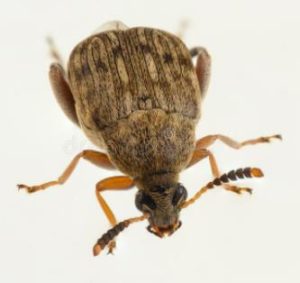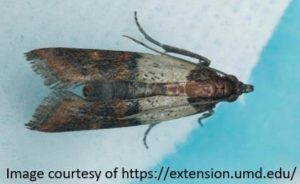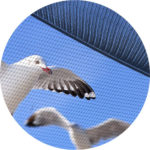Radiological Hazards in Food

The FDA “Hazard Analysis and Risk-based Preventive Controls for Human Food” regulation, referred to as Preventive Controls for Human Food (PCHF), defines “Hazard” as “any biological, chemical (including radiological), or physical agent that has the potential to cause illness or injury.” The addition of radiological hazards shifted the methods of analyzing food and generated a lot of questions. Radiological hazards are rarely encountered in food; however, when they do occur, they can present a risk. Radiological hazards can present themselves in different ways from different sources. The hazards can come from water and soil that may have been contaminated with radionuclides. Water from private wells may lead to high concentrations of radium-226, radium-228, uranium-235 and uranium-238.
There are also naturally occurring radionuclides such as potassium, carbon, radium and their decay products are found in some foods. Because the amount of radiation is very small, these foods do not pose a radiation risk. Some foods contain small amounts of radioactive elements. Food can gain this radioactivity in a few ways including uptake of roots from soil, radioactive particles in the air settle onto crops through deposition, and Bioaccumulation when radionuclides accumulate in animals that ingest plants, feed, or water containing radioactive material.
Submitted by: Rich Gibson ACE, CFSQA
The Bean Weevil

Order: Coleoptera Family: Chrysomelidae Subfamily: Bruchinae
The bean weevils or seed beetles are a subfamily of beetles in the family Chrysomelidae. They are granivores, and typically infest various kinds of seeds or beans, living most of their lives inside a single seed. The subfamily includes about 1,650 species and are found worldwide.
Like most food infesting beetles, the bean weevil is small, around 3.5 to 5mm are dark brown or black in color, and are compact and oval-shaped, often with mottling or striped patterns. Some insects that are scientifically categorized as beetles bear the name of “weevils,” such as the bean weevil. Bean weevils are actually beetles, lacking the snouts of true weevils.
The female bean weevil deposits her eggs on bean pods in the field or on whole beans in storage. The larvae stage of life for this insect is the most destructive as the adults do not feed. Upon maturity, the larvae pupate near the surface of the bean and then emerge from the bean, leaving numerous holes in the bean. The entire life cycle can last from 21 days or as long as 80 days.
Control of this weevil is typical practice with all food infesting pests. Inspection is essential in the discovery of potential infestation. Stock rotation will reduce the risk of development and discarding infested materials is a must to control activity. Products can be frozen and in extreme cases beans can be fumigated to stop the development of this pest. Traditional chemical control methods are not as effective.
Submitted by: Rich Gibson, ACE, CFSQA
Indian Meal Moths & Mating Disruption

Indian meal moths (IMM) are a very common household pest often found in homes, grocery stores and as we all know, food production and warehouse facilities. IMM go through complete metamorphosis which consists of egg, larva, pupae, and adult stages. The larvae are general feeders and can be found in grain products, seeds, dried fruit, dog foods and spices. Although very common, the Indian Meal Moth possesses several unusual traits that make it an infestation machine.
In the New England Region, there was a bakery that was brought on which was experiencing these “moths” flying around their whole operation. After an inspection was performed, it was clear the pest they were dealing with was an Indian Meal Moth. The previous pest control company did not appear to know much about this target pest, due to the lack of pheromone monitors in place, lack of documenting conditions that contribute to this pest thriving and no use of a chemical control.
Upon the set-up of the pest control program, hanging pheromone monitors were implemented and a deep dive inspection was performed. It was not before long that several “micro-environments” were found where very large populations of this target pest were festering. Some of these areas included: old bags of flour that were lost in storage, air ducts that have had large buildups of flour, industrial vacuums that have not been cleaned for long periods of time, flour build up on the indoor silo system, etc.
In environments where there are high levels of Indian Meal Moths, mating disruption is a great tool to help support the knockdown of the pest. Mating Disruption involves the use of sex pheromones to prevent male insects finding females and mating. The Mating Disruption program consists of hanging the strips in a grid pattern in areas that have moderate to high levels of activity. They are to be changed out every 5-6 months depending on the level of activity. The combination of deep dive inspections, improved sanitation, enhanced storage practices and mating disruption brought this client’s facility from 80 IMM’s captured in pheromone traps each week, down to an almost non-existent population.
- Take away Tips:
1. Pheromone monitors allow for the identification of hot spots.
2. Use science to control IMM development without the use of harmful pesticides
3. Inspection always needs to be completed first to identify where to start
4. Sanitation is an effective non-chemical control method
Submitted by: Tyler Connolly
Area Manager
RK Environmental Services














